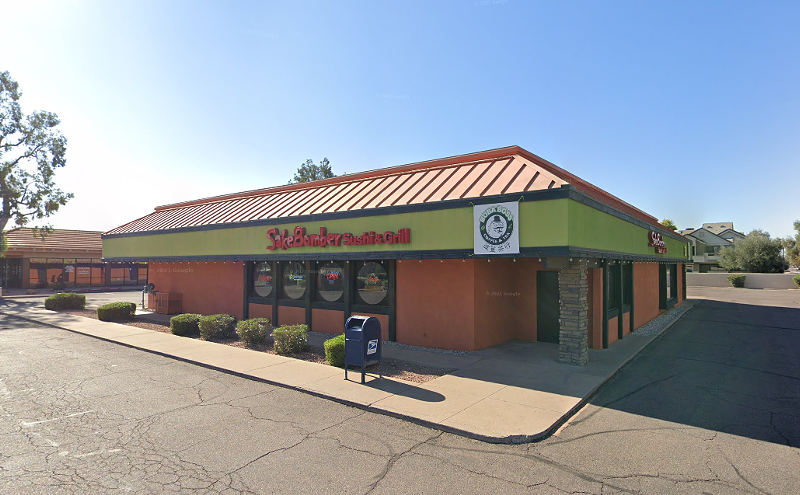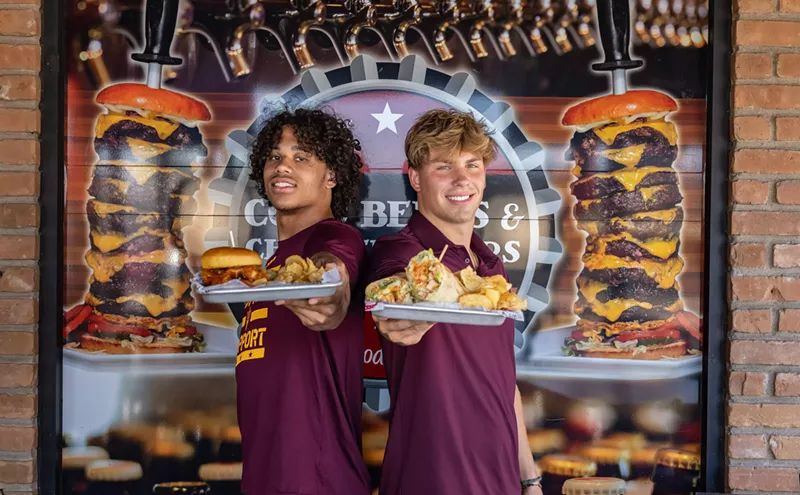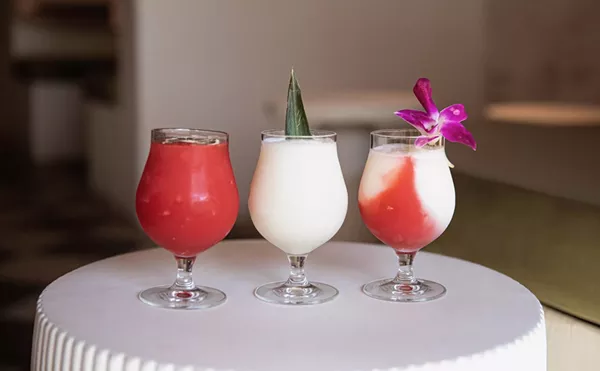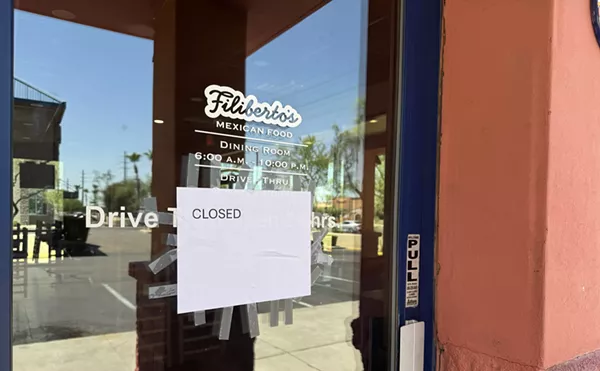In the late 1970s, just before the shah's fall, I spent two years in Iran working for the Iranian Navy.
My job was to teach English to semiliterate teenage recruits, who had joined the Navy because they hated school. The Iranian Navy needed a few good English speakers to run the billion-dollar weapons systems our government was providing.
The Iranians developed a bizarre program to identify the linguistically gifted.
Imagine that you wanted to find Arizona's best swimmers. Using the shah's method, you'd order everyone into a gigantic pool for three weeks. After 21 days, anyone still floating would receive a swimming scholarship.
The Iranian Navy operated the same way. To find a few dozen students for advanced English training, it sent thousands of academically resistant young men through our classes. After weeks of intensive instruction, most classroom conversations still sounded like a Salvador Dali painting looks:
Me: What is your name?
Student: You are my pencil.
Me: Where are you from?
Student: I am from the good morning, fine, thanks.
After a morning talking to students who confused themselves with writing instruments, I would flee to the officers' club for lunch. For two lunches, in fact. Persian cuisine is so seductive that I had double portions every day. Within six months, I'd added 25 pounds to my waistline, but not an inch to my height.
Ayatollah Khomeini ended both my job and the shah's delusions of grandeur. Khomeini also launched hundreds of thousands of Iranian refugees to the United States. The refugees, in turn, launched hundreds of Persian restaurants. Valley dwellers are fortunate that an appealingly authentic specimen, Tasty Kabob, has put down roots in Tempe.
It's nothing more than a chelo kabobi, a small place featuring down-home dishes of fragrant, marinated meats and rice. There's one on every street corner in Iran.
But Tasty Kabob is much spiffier than the grungy joints I used to eat at overseas. It's bright, clean and airy, the windows adorned with flowered curtains, the walls lined with Persian artwork. The friendly proprietors enjoy chatting about the home country, and are rightfully proud of what they serve.
Persian food is heavily scented with spices, but it's not spicy-hot. It's filling but not heavy. And it has that indispensable ethnic virtue of being easy on the wallet.
Borani is a good way to get your taste buds acclimated before the main dishes arrive. It's pur‚ed eggplant, delightfully blended with garlic, onions and mint, terrific scooped up on warm pita bread.
If you think salad has to mean a hunk of iceberg lettuce drenched with Thousand Island dressing, try the Shirazi version. Cubed bits of tomato, cucumber, onion and feta cheese float in a light, tangy vinaigrette sauce that never saw the inside of a bottle.
Yogurt lovers are in for a treat. Tasty Kabob makes its own, and it will forever sour discerning culture mavens on commercial varieties.
Here, the yogurt is mixed with shallots or cucumbers. Eat it plain, or shovel it onto the main dish.
Yogurt is also the principal ingredient in the Iranian national drink, doogh. Mixed with soda water, a little salt and a sprinkling of dried mint leaves, the drink is too weird for me. But my wife guzzled it down with unveiled enthusiasm.
Persian entrees are deceptively simple. A kabob platter looks like a mountain of rice and some slabs of meat.
But once you dig in, you'll discover just how deceiving appearances can be. Chelo kabob Sultaini features two huge skewers of beef. One is a mouth-watering, ground-beef mixture, heavily seasoned with onion and spices. If McDonald's ever put this on a bun, I'd actually go there without my kids.
The other skewer is sublime, a tantalizing, marinated, grilled strip of tenderloin, soft as butter. If your group has carnivorous impulses and the mildest spirit of adventure, this dish will prove deeply satisfying.
Another Persian staple is joojeh kabob. It's done right--an entire marinated cornish hen is cut into legs, wings, thighs and breast, then skewered. Expertly grilled, it's startlingly flavorful, unlike most of the mass-produced, plastic-wrapped poultry we're used to.
Kabobs come with traditional roasted tomato and a pile of naturally perfumed basmati rice, so wonderfully flavorful that it's delicious unadorned.
Tasty Kabob, perhaps attuned to American sensibilities, furnishes just half the amount of rice you'd get in Iran. That means the platters contain twice as much rice as the ordinary American can consume. "Small portions" and "Iranian food" are two phrases that cannot logically appear in the same sentence.
Just as the many words Eskimos have for "snow" signify its variety and importance, so do the many Persian words for "rice." Plain, cooked white rice is chelo. But rice combined with spices, meat and vegetables is polo. One of my all-time favorites is baghali polo, rice heavily infused with dill, studded with lima beans and topped with fork-tender lamb shanks.
Good Iranian desserts have two prized qualities: massive doses of sugar and rose water, and a six-month shelf life. Both bamieh and zoolbia, sweet, deep-fried pieces of dough, meet the standard. If you don't have any insulin handy, simply end the meal with soothing Iranian tea, picturesquely brewed in a samovar.
Tasty Kabob is inexpensive, hearty, authentic, agreeable, tasty. How many more reasons do you need to make a visit?
Byblos, 3332 South Mill, Tempe, 894-1945. Hours: Lunch, Tuesday through Thursday, 11 a.m. to 2:30 p.m.; Friday and Saturday, 11:30 a.m. to 3 p.m.; Sunday, noon to 3 p.m.; Dinner, Monday through Thursday, 5 to 10 p.m.; Friday and Saturday, 5 to 10:30 p.m.; Sunday, 5 to 9:30 p.m.
Unlike Tasty Kabob, Byblos can't decide whether to highlight or bury its Middle Eastern roots.
The decor is as ethnically provocative as a Norman Rockwell scene. Strictly American coffee shop, circa 1955, it features green booths, generic landscape paintings and fake wood paneling. No Lebanese travel posters. No belly dancers. The look is more middle West than Middle East.
It's a family place, too, even on a Saturday night. The baby at the table next to us looked young enough to have come right from the delivery room.
The menu and the clientele seem perfectly matched, each about half American, half Middle Eastern. But I have to wonder about people who come here and order French pepper steak or shrimp scampi. Because it's clear the kitchen feels most at home in the Middle East.
You can tell from the wonderful vegetarian appetizer plate it fixes up. The plate offers a pretty thorough gastronomic tour of Levantine hors d'oeuvres.
Tabbouleh, finely chopped parsley dotted with mint, onion and bulgur, is first-rate. So is the falafel, deep-fried chickpea balls that are uncommonly light here.
Moutabal is a pulpy, eggplant dip with a rich, roasted flavor. It's zipped up with lemon juice, sesame seeds and garlic. More unusual is labneh, a salted yogurt cheese freshened with mint and a dollop of olive oil.
Samples of stuffed grape leaves, hummus, spinach pie, green beans and creamy feta cheese fill up the rest of the platter, accompanied by a decent basket of warm pita bread.
Soup or salad comes with the main dishes, and neither is a throwaway. Lentil soup arrives properly piping-hot, thick and fragrant. The salad sports a distinctive, Middle Eastern touch--lots of tomato and fresh parsley.
Our cagey host really knew how to sell the daily special. "Do you like lamb?" he asked innocuously. As we nodded, he launched into a gushing description of ouzi, thin slices of long-simmered, marinated lamb draped over almond-flecked rice.
The dish was just about as good as the description. And I appreciated the enlivening scoop of sumac-seasoned parsley and onion alongside. Too bad the rice here is not basmati, but a disappointing, bland, long-grain variety.
The kabob combination provides a too-small sampling of excellent lamb, pleasing, grilled chunks of chicken and kafta, highly spiced ground meat mixed with parsley and onion. There's no problem with quality, but the $13.95 price tag is not for Third World budgets.
Shawarma chicken, on the other hand, is a hefty portion of boneless, lemon-soaked, white meat in a peppery tomato sauce. It's a good choice for diners seeking a perky, ethnic kick but no exotic wallop.
The desserts were a gratifying surprise. If they had been songs, I'd have left Byblos humming them. Balouza is a lovely, aromatic pudding, scented with orange blossom and topped with crushed pistachios. Honey-drenched cashew baklava had a fresh, just-cooked-up crunch. Even the ethnically dubious chocolate mousse cake, topped with a big, chocolate slab, provided complete satisfaction.
And diners can finish off the meal in style with cardamom-flavored Turkish coffee.
Byblos' mixed menu tries to appeal to everyone. The meat-and-potatoes crowd can get its fix, while fans of Middle Eastern cuisine can get a whiff of its fragrances. No question which direction to head: Go East, young man.











